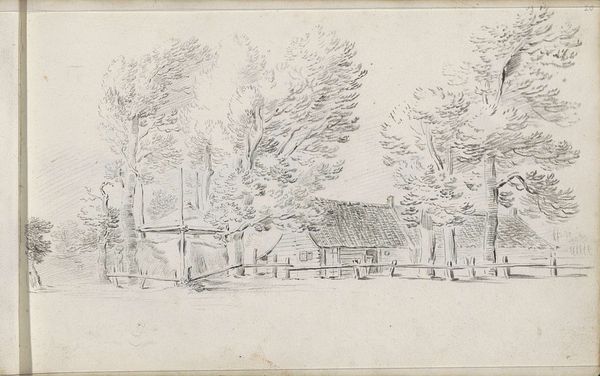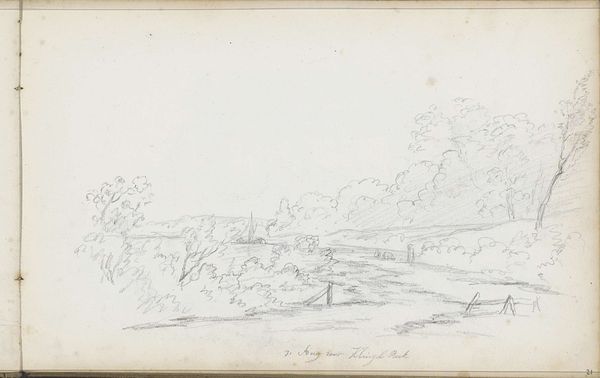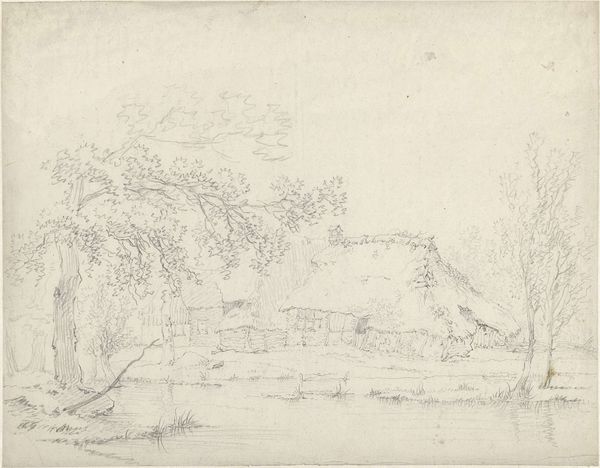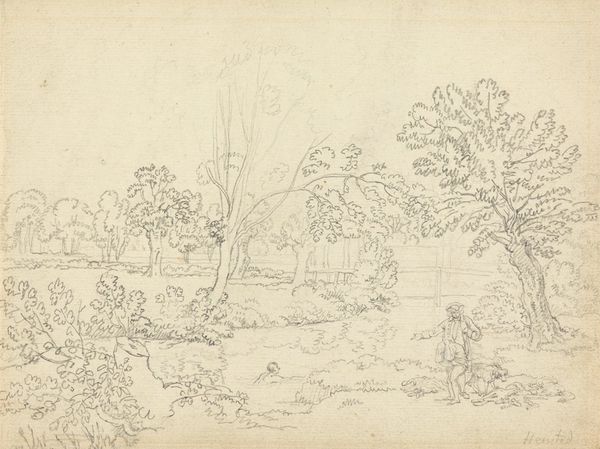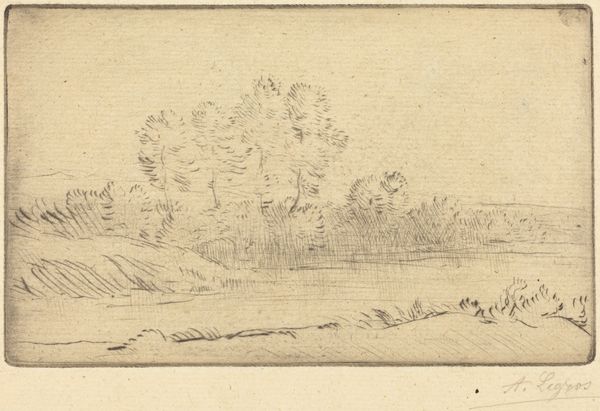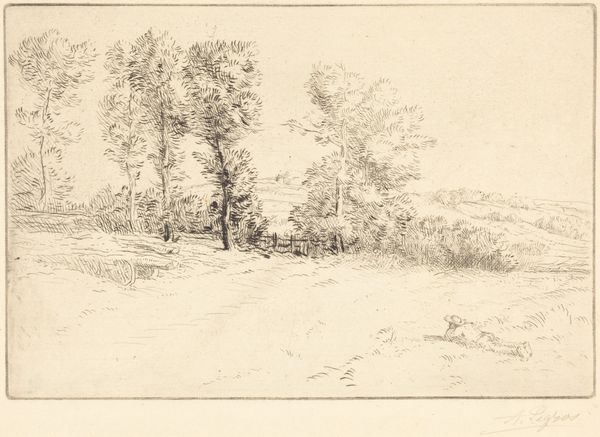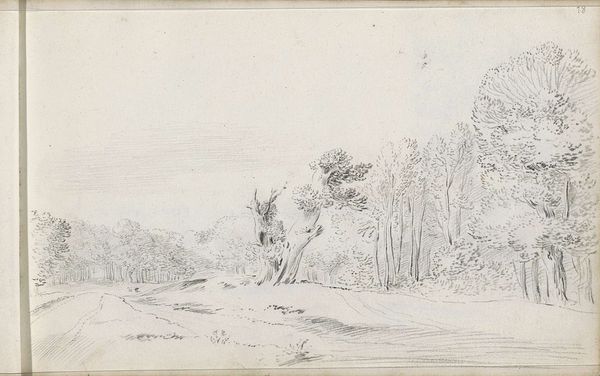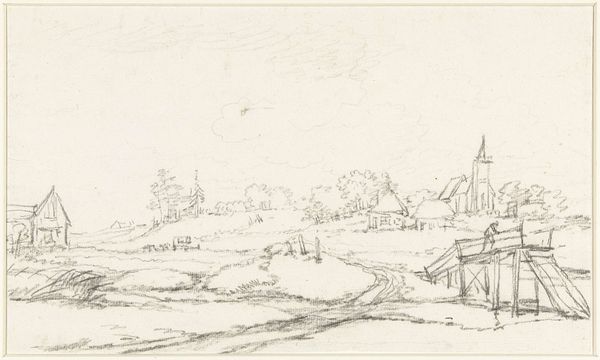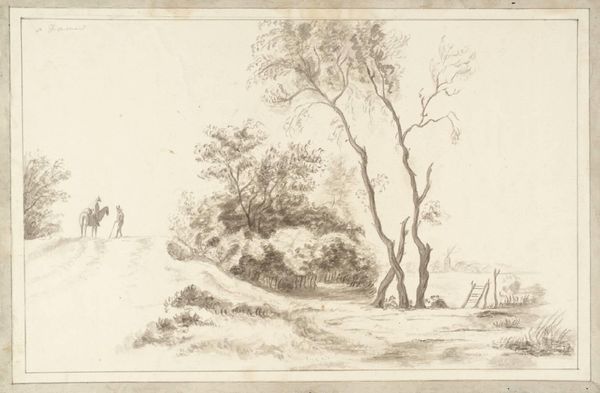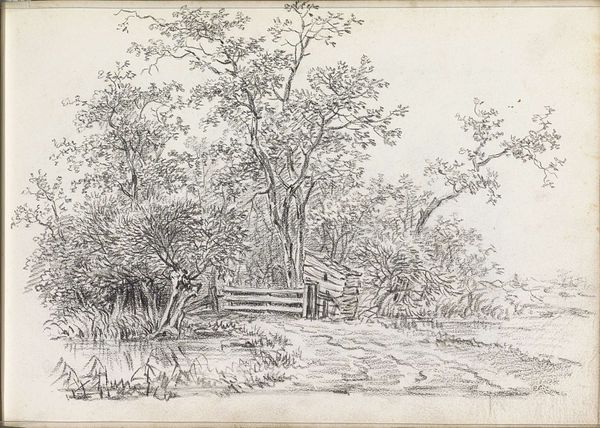
drawing, pencil
#
drawing
#
dutch-golden-age
#
pencil sketch
#
landscape
#
etching
#
pen-ink sketch
#
pencil
#
realism
Copyright: Rijks Museum: Open Domain
Curator: Well, I find myself drawn to this tranquil sketch, seemingly etched with just a whisper of pencil lead. Editor: Indeed, a landscape rendered in the most economical means. I understand we’re looking at “Landschap met een brug over een rivier” – “Landscape with a Bridge over a River," dating back to around 1645-1646. It's attributed to Pieter Moninckx. A seemingly simple study. Curator: Yes, it's a drawing—executed in pencil— with such a delicate touch. Look at the barest indication of the trees against what we can only imagine is a clouded Dutch sky. The bridge, awkwardly charming. The pencil lines establish tonal gradations with exquisite restraint. A limited spectrum allows Moninckx to capture the tranquil mood effectively. Editor: I'm immediately drawn to that bridge. What role did such infrastructure play? In the mid-17th century, the Dutch Golden Age was blossoming on trade and mercantile exchange. Were these simply bucolic scenes, or did these landscapes with thoroughfares like bridges underscore Dutch advancements in commerce and transport? Curator: Perhaps both? The drawing's appeal lies in the formal arrangement— the diagonal thrust of the bridge counterpoised by the verticality of the clustered trees creates visual interest that speaks to balance and control despite being “just a sketch." Look at the economy of the technique— the almost uniform treatment of the pencil hatching used throughout, even to simulate light reflected in the water, contributes to the work’s remarkable structural coherence. Editor: Do you think, with its subtle realism, this was made *en plein air*, and later perhaps worked up as a print? I wonder about Moninckx’s intended audience here, his potential patrons… Perhaps civic officials invested in portraying an ordered, prosperous society? These images naturalize these societal structures, embedding them in the popular imagination. Curator: Fascinating speculation. But as a formal exercise in composition and technique, Moninckx has crafted a masterful study regardless of societal functions, which holds interest. His attention to rendering surface textures—the foliage, the weathered wood of the bridge, creates a visual pleasure. The limited spectrum of grays doesn't impoverish the vision. Instead, this imbues the scene with an evocative unity, no? Editor: A good point, well made. And it raises interesting questions, as all good art should. Curator: Exactly, which perhaps gives us an insight as to why these apparently “simple” landscape studies from the period continue to fascinate us today.
Comments
No comments
Be the first to comment and join the conversation on the ultimate creative platform.
